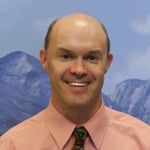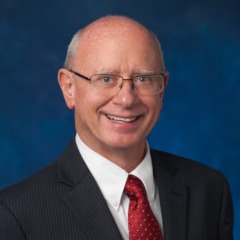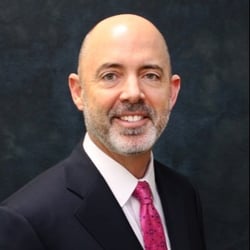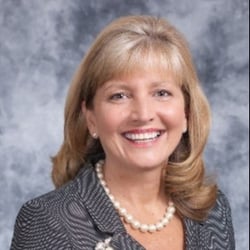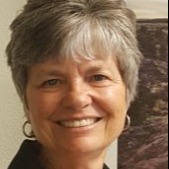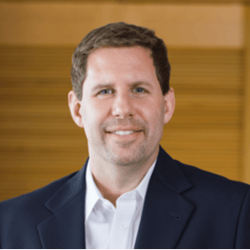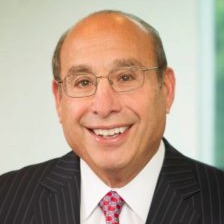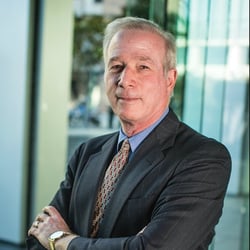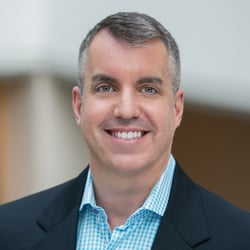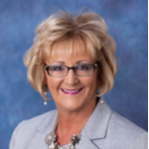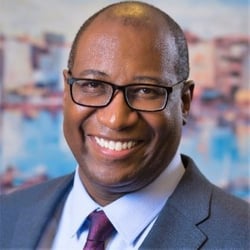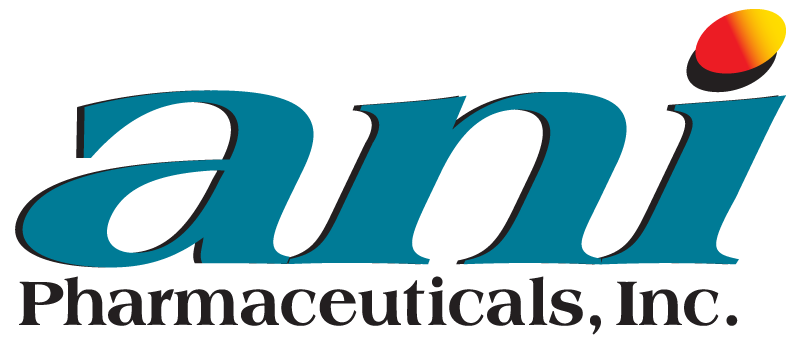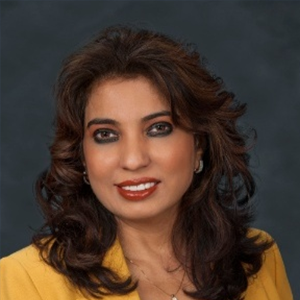 Poonam Alaigh, M.D., MSHCPM, FACP, is the Executive Vice President of Commercial Business at Remedy Partners, Inc., an organization focused on mobilizing payment reform by creating software and services that enable payers, employers, and at-risk providers to organize and finance healthcare delivery around a patient’s episode of care. Dr. Alaigh was previously the Acting Under Secretary for the U.S. Department of Veterans Affairs (VA), where she directed a healthcare system with an annual budget of over $70 billion and over 300K employees, overseeing the delivery of care to more than 9 million enrolled veterans.
Poonam Alaigh, M.D., MSHCPM, FACP, is the Executive Vice President of Commercial Business at Remedy Partners, Inc., an organization focused on mobilizing payment reform by creating software and services that enable payers, employers, and at-risk providers to organize and finance healthcare delivery around a patient’s episode of care. Dr. Alaigh was previously the Acting Under Secretary for the U.S. Department of Veterans Affairs (VA), where she directed a healthcare system with an annual budget of over $70 billion and over 300K employees, overseeing the delivery of care to more than 9 million enrolled veterans.
Key Takeaways
- In order for an organization to have a meaningful impact on the health of the populations it serves, it must tap into the various stakeholders that play a role in community health and wellness.
- Building a foundation of trust, a critical component of successful collaborations, occurs when stakeholders show they care for one another both personally and professionally.
- One of the biggest challenges in achieving successful collaborations is being able to both recognize and celebrate the small wins along the way while staying focused on the long game.
TLD Group: Can you provide some background about your role as Under Secretary for the VA?
Alaigh: I was responsible for overseeing the nation’s VA healthcare system, which included over 300K employees, over 160 hospitals, and thousands of outpatient facilities and community-based clinics. When I think about the leadership role I play, not only at the VA but any organization I have worked for, I ask myself about the footprint I’d like to leave at the end of my tenure. On day one of any new role, I determine the kind of legacy or impact I’m going to have that will be long-lasting and upon which the organization will continue to grow and evolve. When I started at the VA, each one of my 300 leaders in the field across the country heard only one drum beat from me: “I will always have your back.” That was always important for me to communicate to them in both my words and actions. I was determined to walk this walk and instill a culture of trust and unconditional support, where people aren’t afraid to take chances or go outside of bounds, if it meant doing what was best for the veterans and for our mission. It was about the spirit of the law, not always the letter of the law. It was about evolving from a rule-based organization to a principle-based organization. It started with me, and the rest of the organization followed in my footsteps. So long as it was for the right intention, even if it doesn’t go exactly as hoped, they felt supported and that my leadership team and I believed in them. For an organization like the VA, which many times was cast in a negative light publicly, that cultural shift was the impact that I decided I wanted to leave, and I believe I was successful in that regard. This translated into outcomes that directly and positively impacted the care for our veterans, such as:
- Transitioning from a paternalistic organization to a veteran-driven culture of delivering care
- Same-day access to services in primary and mental health
- Launching an Uber-like Health Care Improvement Center that proactively mitigated vulnerabilities across the VA healthcare system
- The Access and Quality in VA Healthcare website that allows veterans to look up wait times and quality of VA facilities to compare them to private-sector hospitals in their community
- Launching “Anywhere to Anywhere,” a robust telehealth program across the country
- Development of an Opioid Safety Initiative toolkit to address the nationwide addiction epidemic
- A decisive direction on the electronic health record issue that the system was tackling for decades
- The “Be There” initiative – a comprehensive movement to prevent veteran suicide
All this was possible because of that culture shift. For the first time since the access crisis of 2014, the employees were now feeling valued, respected, and energized.
TLD Group: How do you define the health ecosystem for the Department of Veteran’s Affairs?
Alaigh: No organization can succeed when it acts as an isolated island. Depending on the organization’s mission and scope, the ecosystem may vary. For example, when I worked at the VA, I was part of one of the largest health ecosystems in the world. There is no ecosystem more expansive in both breadth and depth as that of the VA. At the center is our nation’s heroes, who have sacrificed so much and changed their lives forever for us to enjoy the freedom that we do. These are special patients with complex needs, whether it relates to medical issues, behavioral health issues, social issues, employment issues, readjustment issues, family support issues, and so on. The ecosystem is so broad, and we must tap into many different stakeholders to provide the necessary comprehensive care for our veterans. In addition, our ecosystem includes our veteran service organizations, members of Congress, advocacy groups, and community-based organizations that do outreach, provide support, and champion the needs of our veterans. The VA is truly a constellation of stakeholders that have varying roles, including providing patient care, facilitating the reintegration and assimilation of our returning service members into society, ensuring sufficient funding for resources, and advocating for the appropriate benefits and provisions. Furthermore, there is valuable and extensive collaboration with the community, as well as with the private sector for delivering direct patient care, training health care professionals, and break-through scientific research and new innovative treatments. The VA is a nexus that brings all these interdependent stakeholders together to create one of the best healthcare systems in the world, embodying the concept of “Whole Health” for our veterans.
TLD Group: Can you provide an example of a collaborative initiative you led?
Alaigh: During my tenure, the VA launched a national mental health awareness campaign in May 2017 to tackle the issue of veteran suicide. The VA released a report that found that the risk for suicide in the veteran population is 22% higher than that in the average American population. Even one veteran suicide is one too many – this is after they’ve sacrificed and served for the country. These are our nation’s heroes, and so it was clear that we needed to take action to support our veterans. Preventing veteran suicide became a clinical priority for the VA. To tackle this issue, we pulled together different internal programs – mental health, behavioral health, and substance abuse – and began directing funding toward these initiatives. We created new programmatic roles and functions, such as suicide prevention coordinators, and placed them in every facility. We improved our veteran crisis line by bringing in clinical elements, including the creation of a risk scoring system to preemptively identify those veterans who were at highest risk for suicide, and warm transfers to our clinical team based on these risk scores. We collaborated with many different community organizations to do outreach and raise awareness. We also partnered with private sector corporations to develop a public service announcement entitled, “No Veteran Left Behind,” and launched a public-private campaign. Our elected officials were united on this effort and started building awareness campaigns in their local district offices. We also had our veteran service organizations join the effort to raise the awareness around mental health and the fact that this is preventable. This whole campaign was built around partnership of multiple stakeholders both within and outside of the health ecosystem.
TLD Group: Did you face any obstacles in engaging and aligning the key stakeholders for this initiative?
Alaigh: I don’t think there’s a single American who doesn’t know a veteran, so when the issue hits that close to home, it’s really easy to rally support for such an important issue as veteran suicide. When you look at the data and the need, the opportunity to improve the situation becomes the value proposition for why other organizations should get involved. However, when you bring different stakeholders together, there’s always the question of, what’s in it for me, for my team, and my organization? Who is going to get the credit and how are we going to show that we played a role and made an impact? The key then becomes transitioning the group from each stakeholders’ individual objective to finding the common ground that is in the core interest of all and work towards a shared, unified purpose and goal.
TLD Group: What are some of the “lessons learned” for making collaboration successful?
Alaigh: For collaboration to be successful, first you must show people that you care about them. When people come from different perspectives or vantage points, they are often siloed and come to the table with certain notions and patterns of thinking. If you’re able to demonstrate that you care about them and the way they approach the issue, then the walls start to break down, trust builds, and you can have an honest and transparent dialogue without concern for judgment. Building that foundation of trust where the stakeholders show they care for each other and are not dismissive of each other is critical. Additionally, it’s important to be fair – you can’t be inconsistent in the way you handle situations. This includes ensuring that everyone is participating and that their voices are heard. Lastly, for collaboration to work, it’s important to build consensus, which doesn’t necessarily mean that everyone agrees on everything 100%, but that we can all accept the ultimate decision we settled upon.
TLD Group: Do you have an example of how you built consensus among multiple diverse stakeholders?
Alaigh: Improving veterans’ access to healthcare has been one of the VA’s top priorities since the VA access crisis in 2014. In 2015, fixing the access crisis started with a 3-pronged approach to the problem:
- Getting the right people together to develop a roadmap that would tackle the crisis
- Disseminating the roadmap with solution sets
- Providing personnel and financial resources to operationalize the roadmap
For this to succeed, it was most critical to ensure that Prong 1 was successful, and we had consensus among our multiple diverse stakeholders. It started with a four-week sequestered session that brought in many different stakeholders in various organizational roles – frontline workers, mid-level leaders, executives, veterans, etc. It was a group of about 20 people, and over the course of the four weeks, there were no titles or functional roles. The one and only purpose that we identified with and focused on together was to overcome the access crisis that was impacting millions of veterans. When we started the session, we laid out ground rules where we committed to complete honesty, a dome of silence where nothing left the room unless otherwise agreed upon, and a deliverable of the session that we all agreed to and were heading toward. Of course, when there are so many different stakeholders coming together, it often comes to a point where you need to manage difficult conversations. To do so, it’s always best to go back to the common vision that binds you all together, which in this case was the access crisis. We all had different perspectives, but our common goal that brought us together was more powerful than our differences. Strong collaborative leaders are able to create that single purpose that everyone owns, superseding individual notions and perspectives.
TLD Group: What was the biggest challenge to achieving successful collaboration?
Alaigh: Based on my experiences, one of the biggest challenges in achieving successful collaboration is the lack of demonstrable progress and not celebrating the small successes. It’s the notion that we have to fix perpetuating problems rather than recognizing the small wins along the way. It’s the fact that we focus on what is not working rather than look at what is working. It is how we regress to our siloes instead of continuing to work as interdependent teams that value the collective contribution. Change in healthcare is not just a flip of a switch. It takes time and patience to turn this big ocean liner around. Collaboration becomes stronger when we showcase our improvements and strengths in a tangible way, while simultaneously being transparent about the vulnerabilities and weaknesses in the system that still need improvement. The team has to be appreciated for the milestones and successes we make along the way, while still recognizing that more work needs to be done on our core issues. Collaborations are successful when the team is able to sprint while running a marathon.
View our other HELM Q&A Interviews:


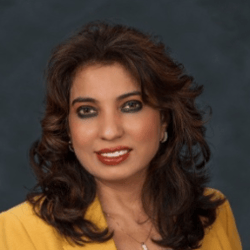

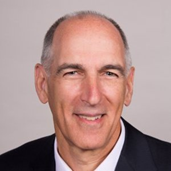

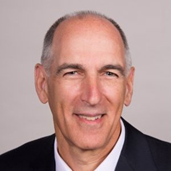 Andrew Baskin, MD, is Aetna’s Vice President, National MedicalDirector for Quality and Clinical Policy and served as the Interim Chief Medical Officer (in 2014). He works on initiatives to measure and improve quality of care, the provision of evidence based care, quality measurement implementation and public reporting, health plan accreditation, and the establishment of performance based networks. Additionally, Andy partners with others to help establish programs which create incentives for more effective and efficient care, influence and assure compliance with healthcare reform regulations, develop products to improve affordability and quality of care, and promote payment reform.
Andrew Baskin, MD, is Aetna’s Vice President, National MedicalDirector for Quality and Clinical Policy and served as the Interim Chief Medical Officer (in 2014). He works on initiatives to measure and improve quality of care, the provision of evidence based care, quality measurement implementation and public reporting, health plan accreditation, and the establishment of performance based networks. Additionally, Andy partners with others to help establish programs which create incentives for more effective and efficient care, influence and assure compliance with healthcare reform regulations, develop products to improve affordability and quality of care, and promote payment reform. Mohamed Diab, MD, Vice President of Provider Transformation leads population health management at Aetna. His focus is on providers as they transform their care delivery to achieve the “Triple Aim” by improving quality of care and reducing unnecessary cost. Mohamed has more than 25 years of experience as a provider as well as an executive in the payer and consulting industries. He has a background in medical management, pharmacy benefit management, clinical informatics and cost management programs.
Mohamed Diab, MD, Vice President of Provider Transformation leads population health management at Aetna. His focus is on providers as they transform their care delivery to achieve the “Triple Aim” by improving quality of care and reducing unnecessary cost. Mohamed has more than 25 years of experience as a provider as well as an executive in the payer and consulting industries. He has a background in medical management, pharmacy benefit management, clinical informatics and cost management programs.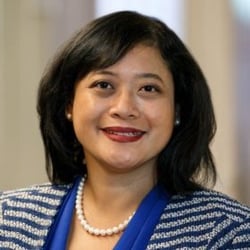

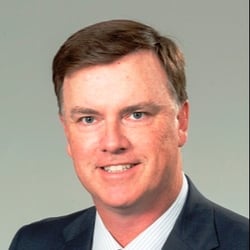

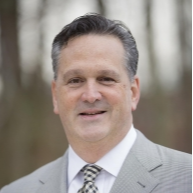

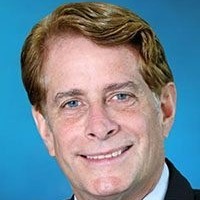

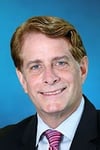 Robert C. Garrett is Co-CEO of Hackensack Meridian Health, which has four hospitals ranked among the top 10 in New Jersey according to U.S. News & World Report – including No. 1 ranked Hackensack University Medical Center - more than any other network in the state. Robert focused on aggressive expansion of the Hackensack University Network before its merger with Meridian Health. As Co-CEO, Robert concentrates on innovation and leading partnerships, including launching New Jersey’s first private medical school with Seton Hall University and a historic partnership with Memorial Sloan Kettering Cancer Center.
Robert C. Garrett is Co-CEO of Hackensack Meridian Health, which has four hospitals ranked among the top 10 in New Jersey according to U.S. News & World Report – including No. 1 ranked Hackensack University Medical Center - more than any other network in the state. Robert focused on aggressive expansion of the Hackensack University Network before its merger with Meridian Health. As Co-CEO, Robert concentrates on innovation and leading partnerships, including launching New Jersey’s first private medical school with Seton Hall University and a historic partnership with Memorial Sloan Kettering Cancer Center. John K. Lloyd is Co-CEO of Hackensack Meridian Health, one of the largest, most comprehensive health networks in New Jersey, which includes 13 hospitals, 28,000 team members, more than 6,000 physicians and over 140 patient care locations across the state. John has focused much of his career on developing a full continuum of care – long before national health care reform mandated such changes. As Co-CEO, John oversees all non-acute care hospital businesses, including population health and the foundations. John’s expertise and vision have helped the network meet and exceed the challenges of health care reform.
John K. Lloyd is Co-CEO of Hackensack Meridian Health, one of the largest, most comprehensive health networks in New Jersey, which includes 13 hospitals, 28,000 team members, more than 6,000 physicians and over 140 patient care locations across the state. John has focused much of his career on developing a full continuum of care – long before national health care reform mandated such changes. As Co-CEO, John oversees all non-acute care hospital businesses, including population health and the foundations. John’s expertise and vision have helped the network meet and exceed the challenges of health care reform. Patrick R. Young is president of Population Health for Hackensack Meridian Health, where he leads the Population Health division and is responsible for accelerating the development of strategic priorities related to health care reform; population health management; Meridian’s Medicare Shared Savings Accountable Care Organization; Hackensack Meridian Health Partners, Hackensack Meridian Health’s clinically integrated network; health insurance partnerships; as well as overseeing Managed Care.
Patrick R. Young is president of Population Health for Hackensack Meridian Health, where he leads the Population Health division and is responsible for accelerating the development of strategic priorities related to health care reform; population health management; Meridian’s Medicare Shared Savings Accountable Care Organization; Hackensack Meridian Health Partners, Hackensack Meridian Health’s clinically integrated network; health insurance partnerships; as well as overseeing Managed Care.
